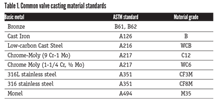NAM Monday Economic Report - September 28, 2015
The global manufacturing sector continued to show signs of struggle in data released last week, with a number of headwinds dampening demand and production.
Closer to home, the Markit Flash U.S. Manufacturing PMI was unchanged at 53.0 in September, the slowest pace since October 2013. Overall, manufacturing continues to grow modestly, but several headwinds have dampened activity from a more robust expansion seen as recently as six months ago. Exports expanded for only the fourth time so far this year, as the stronger U.S. dollar and sluggishness in export markets have hurt manufacturers’ ability to increase their international sales.
Meanwhile, surveys from the Kansas City and Richmond Federal Reserve Banks both contracted in September, with the latter doing so for the first time since April. Manufacturers in the Kansas City region were somewhat pessimistic about the next six months, the first negative number for the forward-looking measure since July 2009. In addition, the Census Bureau reported that new durable goods orders fell 2.0 percent in August, essentially offsetting the 1.9 percent increase in July. On a year-over-year basis, new orders have fallen 2.3 percent, highlighting the challenges faced by manufacturers over much of that time. In August, much of the decrease came from the transportation sector, with reduced demand for motor vehicles and parts and nondefense aircraft for the month. Excluding transportation, new orders for durable goods were unchanged in August.
Beyond manufacturing, economic indicators out last week were mixed. New home sales increased 5.7 percent in August, extending the 12.0 percent gain in July. More importantly, this was the fastest pace of new home sales growth since February 2008. On a year-over-year basis, sales were up a healthy 21.6 percent. Yet, existing home sales moved in the opposite direction, down 4.8 percent in August and the slowest pace in four months. Inventories of existing homes also picked up, in contrast to a tighter supply of new homes for the month. On the consumer front, the University of Michigan and Thomson Reuters reported that confidence fell to an 11-month low. The Consumer Sentiment Index declined from 91.9 in August to 87.2 in September. Still, this revised figure was somewhat better than the 85.7 estimate in preliminary numbers released two weeks ago. Moreover, while the drop in confidence in September reflects renewed economic anxieties, this measure has trended generally higher over the past few years.
Finally, the Bureau of Economic Analysis revised second quarter real GDP slightly higher, with the U.S. economy expanding by 3.9 percent in its latest estimate. This was up from 3.7 percent in its previous estimate. Better consumer and business spending data were largely responsible for this latest revision, with inventory growth slowing more than previously thought. However, many of the underlying trends remained the same. The bright spots were personal spending, fixed investment and local and state government spending, with those three categories accounting for nearly all of the growth in the second quarter. Looking ahead, my current forecast for the third (or current) quarter is 2.2 percent, with 2.4 percent growth for 2015 as a whole. This would match the growth rate for 2014. The outlook for 2016 is for the U.S. economy to expand by 2.5 percent.
Overall, the manufacturing sector is growing in the United States, but that expansion has been far from robust over much of this year. However, manufacturers are cautiously upbeat about the coming months, and we will be looking for signs of a possible rebound in data out this week. This includes the Institute for Supply Management’s Manufacturing Purchasing Managers’ Index, which is due out on Thursday. The Dallas Federal Reserve Bank will also release its latest survey, which is expected to show continuing challenges in its region, and the Census Bureau will publish factory orders and shipments. Beyond these indicators, jobs will be the focus, with new employment numbers due on Friday. We will be looking for better hiring data from manufacturers in September, with the sector bouncing back from declining employment in August. Other economic numbers to watch include the most recent data on construction spending, consumer confidence and personal income and spending.
Chad Moutray, Chief Economist, National Association of Manufacturers
RELATED CONTENT
-
The Future of Valve Manufacturing is Already Here
Companies in the valve and control products industry are responding to a confluence of forces that are changing the landscape of manufacturing — automation, agility and digitalization to name a few.
-
Recycling Foreign Metals: Buyer Beware
The North American steel-making industry, with its historic record of quality control, is no longer the world’s top producer.
-
The Final Control Element: Controlling Energy Transformation
When selecting control valves, be sure to properly evaluate the process conditions to identify potential issues and select the proper management techniques.








 Unloading large gate valve.jpg;maxWidth=214)

